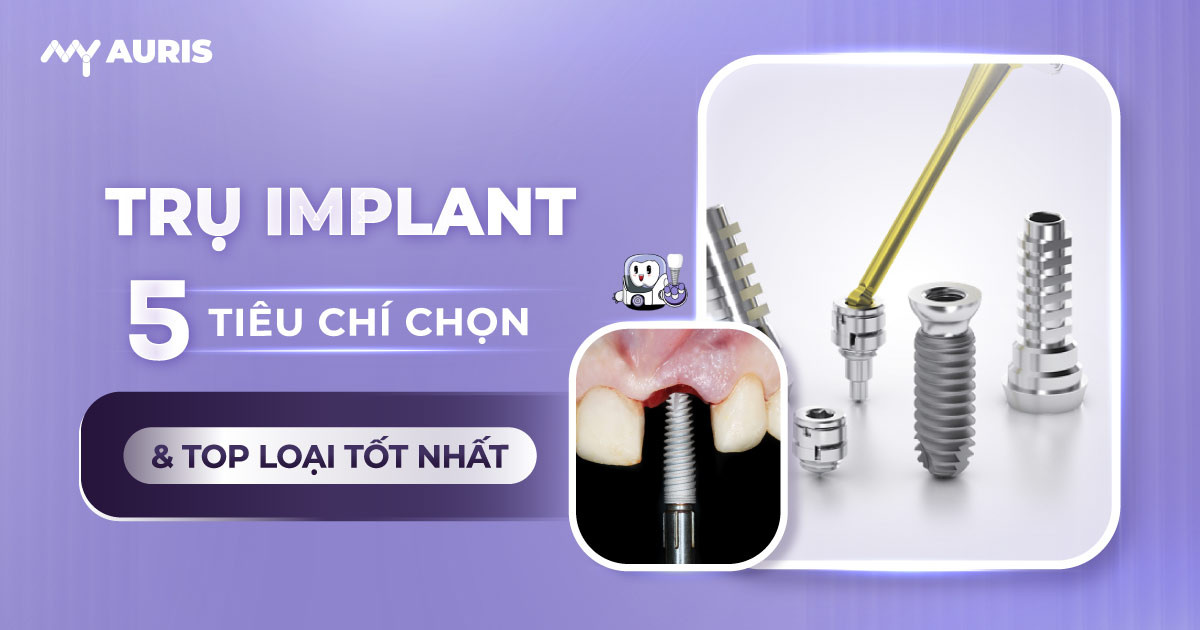Currently, the implant market offers numerous brands with varying implant costs and qualities, catering to diverse patient needs. Popular mid-range implant systems include Korean Dio Implants and Dentium Implants (US/Korea), which provide effective restoration at reasonable prices. So, what are the differences between these implant types? Which one should you choose for the best implant results? Let’s delve deeper to make an informed decision when selecting a reputable dental service!
5 Important Criteria When Choosing an Implant Abutment
During the dental implant restoration process, the Implant abutment plays a crucial role, determining durability and long-term effectiveness. Choosing the right implant abutment criteria not only ensures a smooth implant placement procedure but also optimal chewing function and aesthetics. Below are 5 important criteria to help patients select the appropriate abutment:
Implant Integration Time
Each implant abutment type has a different integration time, typically ranging from 3 to 6 months. High-end abutments with advanced surface treatment technologies like Mis C1 Implants (Germany) and Nobel Implants (Sweden) accelerate this process. Notably, Straumann Implants (Switzerland) stand out with an integration time of just 6 weeks, significantly shortening the waiting period for restoration.
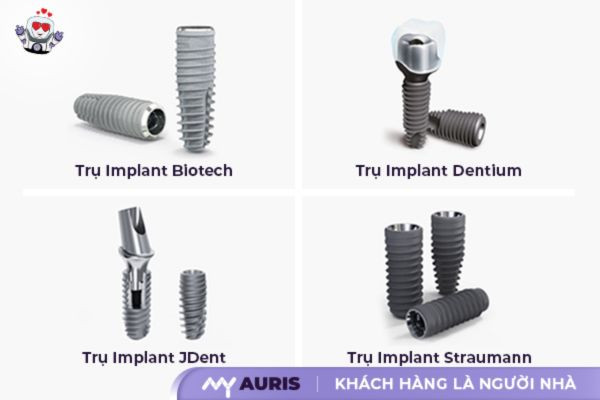
Choosing a Reputable Implant Brand
Implant brands with a long history generally ensure superior quality due to extensive clinical research. Leading implant systems today include Straumann Implants and Nobel Biocare Implants, widely used globally with high success rates.
Implant Warranty Policy
Legitimately imported abutments always come with an official Implant warranty, assuring patients of their quality. Depending on the brand, warranty periods can range from 10 to 20 years, ensuring safety and durability over time.
Choosing the Right Implant Abutment Size
Smaller implant abutments facilitate easier placement into the jawbone, especially in cases of low bone density. Additionally, this type of abutment optimizes bone integration and avoids impacting adjacent teeth.
Considering Implant Costs
Dental implant costs vary depending on the abutment type. Patients can choose mid-range implants if cost-saving is a priority, or opt for premium brands like Straumann or Nobel Implants for optimal restoration quality.
Comparing Popular Implant Abutment Types – Which is the Best Choice?
Implant abutments play a critical role in the implant placement process, helping restore lost teeth with high durability. Below are the Straumann Implant, Nobel Biocare Implant, Mis C1 Implant, Tekka Global D Implant, Dentium Superline Implant, and Dio Implant systems, all highly rated for quality and suitable for various restoration needs.
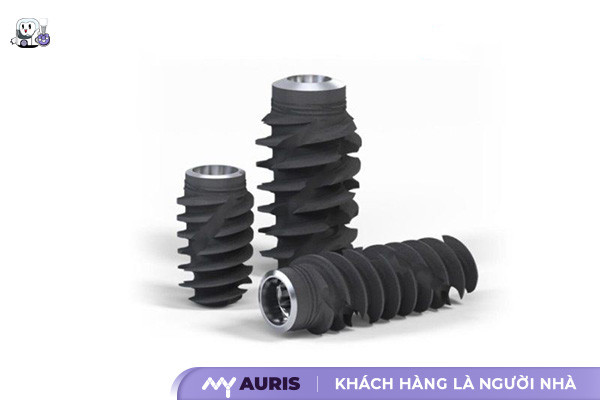
Straumann Implant – World’s Leading Premium Implant Abutment
Manufacturer: Straumann Group (Switzerland)
Advantages: Uniquely features “hydrophilic” technology, accelerating integration with the jawbone. Compact, anti-rotational design allows for quick implant placement. SLActive bioactive membrane enhances bone cell adhesion, shortening restoration time from 3-6 months to just 6-8 weeks. Superior rigidity, suitable for full-arch restorations.
Implant Cost: 35,000,000 VND/abutment
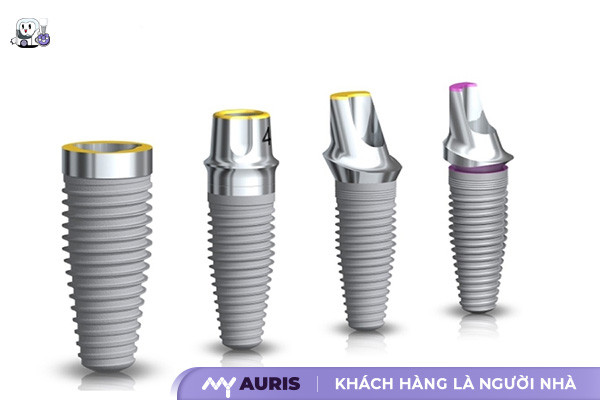
Nobel Biocare Implant
Manufacturer: Nobel Biocare (Sweden)
Advantages: Constructed from 4 layers of high-grade Titanium, ensuring strong durability. TiUnite bioactive membrane promotes integration with the jawbone. Triangular Abutment connection ensures tight coupling, enhancing stability. Suitable even for patients with thin or porous jawbones. Preferred for full-arch restorations.
Implant Cost: 30,000,000 VND/abutment
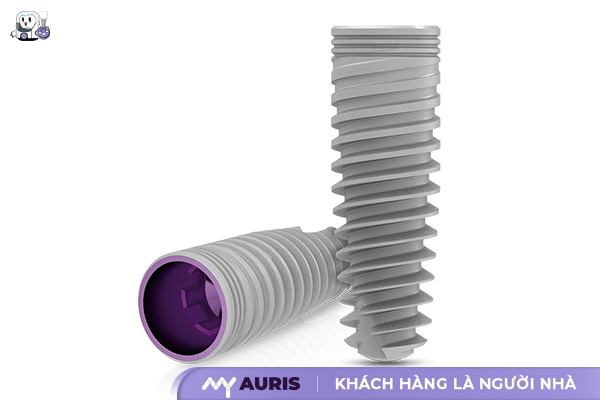
Mis C1 Implant – Leading Implant Abutment from Germany
Manufacturer: MIS Implants Technologies Ltd (Germany)
Advantages: Apex features a domed design with a Code taper connection, providing immediate stability after placement. Roughened Platform Switching surface with double threads ensures high durability of the implant abutment. Conical, anti-rotational design prevents bone loss. Micro-grooves on the abutment neck reduce compressive forces on the bone, promoting recovery. Dual stabilization mechanism (mechanical & biological) accelerates bone growth. Suitable for full-arch restorations.
Implant Cost: 24,000,000 VND/abutment
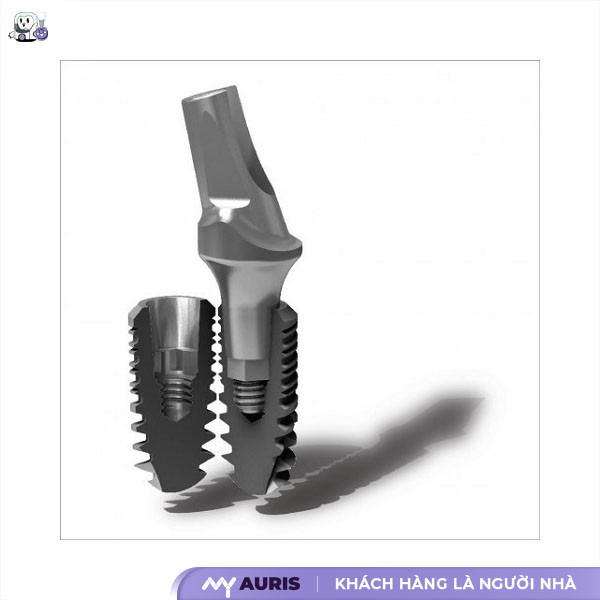
Tekka Global D Implant – #1 Brand in France
Manufacturer: Global D (France)
Advantages: Made from Grade 5 Eli Titanium, ensuring high durability. Tapered conical connection provides better force distribution, reducing pressure on the jawbone. Double helix threads facilitate easy bone integration. Shortens placement time. Preferred for full-arch restorations.
Implant Cost: 25,000,000 VND/abutment
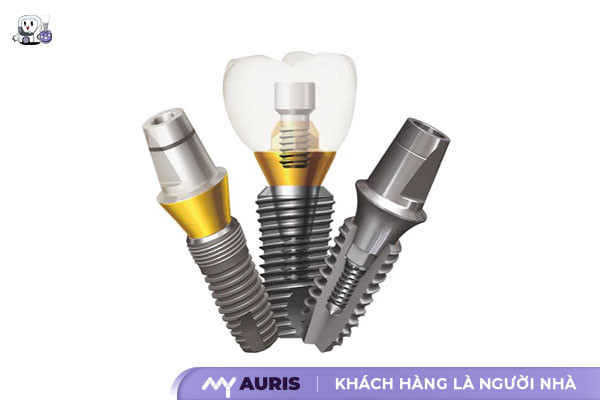
Dentium Superline Implant – Popular Choice in Asia
Manufacturer: Dentium Co., Ltd (USA)
Advantages: SLA roughening technology stimulates bone cell growth. Double helix grooves enhance bone tissue adhesion. Elongated design ensures even force distribution across the entire abutment. Conical Abutment connection with a hexagonal neck improves fit accuracy. Suitable for single tooth restorations.
Implant Cost: 21,000,000 VND/abutment
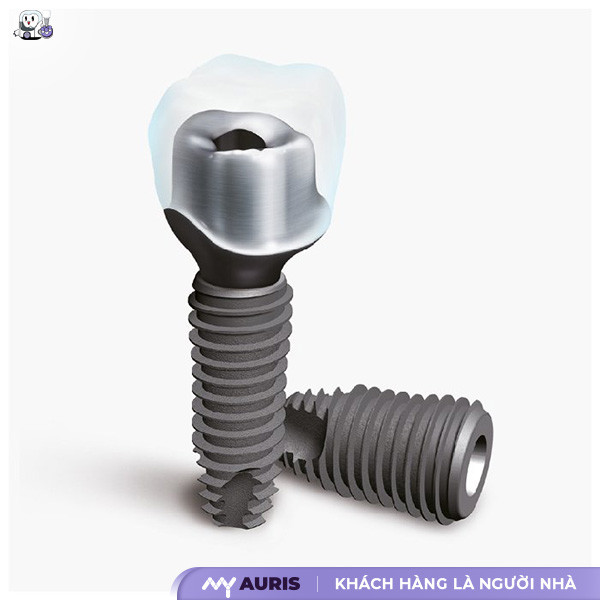
Dio Implant – Cost-Effective Solution from South Korea
Manufacturer: Dio Implant (South Korea)
Advantages: Abutment surface treated with micro-sandblasting and micro-acid etching, increasing bone adhesion. Helical grooves on the abutment body promote better bone tissue growth. 10-spiral connection structure enhances stability. High aesthetic appeal, suitable for restorations deep under the gum line. Reasonable cost, ideal for single implant placements.
Implant Cost: 13,000,000 VND/abutment
Common Characteristics of Implant Abutments
Titanium-Made Implant Abutments – Safe and Durable
All implant abutments are manufactured from Titanium – a highly biocompatible material recognized by medical organizations as safe for human implant procedures. Thanks to its non-irritating properties and resistance to oxidation in the oral cavity, implant abutments ensure superior durability, excellent load-bearing capacity, and can last for 20 years or even a lifetime.
Replacing Natural Tooth Roots – Ensuring Perfect Chewing Function
Implant abutments are designed to mimic artificial tooth roots, with a tapered, screw-like shape that ensures stable integration into the jawbone. The abutment surface undergoes special treatment to facilitate rapid and stable bone integration.
Depending on the placement site, the dentist will use 3D CT scans to assess the jawbone structure and select the appropriate implant abutment size. The abutment must be placed at an adequate depth to avoid affecting soft tissues and nerves, while also ensuring the stability of the prosthetic crown.
Implant abutments not only provide a stable foundation for dental crowns but also transmit chewing forces to the jawbone, helping prevent bone loss and maintaining facial structure over time.
Differences Between Implant Abutment Types
Implant abutment systems on the market differ in terms of implant manufacturing technology, Titanium material, implant surface treatment technology, abutment design, etc. These factors determine the success of implant placement, durability, jawbone integration time, and the stability of the prosthetic tooth.
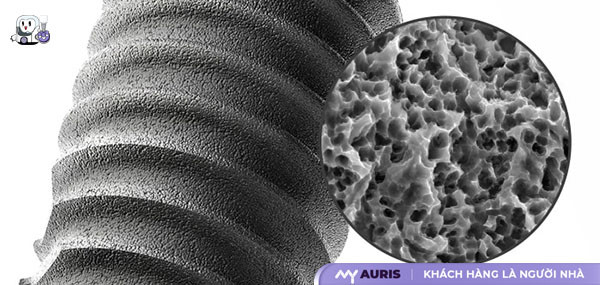
Implant Abutment Surface Treatment Technology
Acid Etching (EA) Technology
After manufacturing, the implant abutment is immersed in a specialized acid solution, which creates a rough surface. This allows bone cells to easily adhere and grow, supporting more effective bone integration.
SLA Technology – Active Generation Implant
This process still includes an acid treatment phase, followed by coating the surface with a special Ti-6Al-4V + AS layer. This coating serves to:
Increase osteoconductivity and stimulate osteoinduction.
Accelerate bone integration, allowing the implant abutment to stabilize faster.
Improve load-bearing capacity, providing a more natural chewing sensation.
Implant Abutment Neck Treatment Technology
Micro-Threaded Neck Treatment
Creates dense micro-threads, increasing the contact area between the implant abutment neck and the jawbone, improving stability and bone adhesion.
Laser-Treated Neck
Uses Laser to create micro-fluid and bone cell islands, helping bone and gum tissue adhere more firmly to the implant abutment, enhancing implant success.
Platform Switching Neck Treatment
Stimulates robust bone cell growth while reducing chewing pressure at the implant neck. This is the most advanced technology for preventing bone loss after implantation.
Diverse Implant Abutment Sizes
Each implant abutment system offers different sizes to suit various tooth loss conditions. The dentist will consider the tooth loss location, jawbone density, and proximity to nerves and sinuses to select the appropriate implant size, ensuring safe placement.
Implant Abutment Load-Bearing Capacity
Each implant abutment type has a different load-bearing capacity, depending on the manufacturing technology of each brand. Some premium implant lines are specially treated with biological components to enhance durability and load-bearing capacity, providing a better chewing experience.
Implant Bone Integration Capability
Typically, it takes about 3 months for an implant abutment to integrate with the jawbone. However, with advanced implant systems like Straumann (Switzerland), SLA technology shortens the healing time to just 6-8 weeks, speeding up the recovery process while ensuring strong stability.


